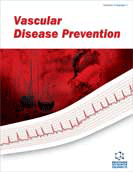Abstract
Aims: To determine whether a short period of intensive monitoring and optimization of antihypertensive therapy according to a target-driven treatment protocol can improve blood pressure (BP) control in high-risk patients with type 2 diabetes. Methods: Consecutive patients (n=28, mean age 66 years) with type 2 diabetes and sub-optimal BP ( > 145/85 mm Hg) who were already receiving two or more antihypertensive drugs were studied for an 8-week period by a single investigator in a university hospital clinic. Current antihypertensive therapy was reviewed and optimized using a pre-defined step-wise treatment algorithm. The end-points were (a) attainment of the British Hypertension Society Audit standard BP of < 140/80 mm Hg or (b) the end of the 8-week intervention period, whichever was reached first. Patients were subsequently discharged back to routine clinical care and re-assessed at > 6 months. A control group received standard treatment shared between the hospital clinic and primary care by general practitioners. Results: In the intervention group, a significant improvement in both systolic (169 ± 3 to 149 ± 4 mm Hg; p < 0.001) and diastolic (88 ± 2 to 80 ± 2 mmHg; p < 0.01) BP was observed at 8 weeks with 43% of patients achieving the audit standard (p < 0.01). The improvement in systolic BP was partially sustained at > 6 months (164 ± 3 mm Hg; p < 0.005 vs. baseline). The mean daily number of antihypertensive drugs was 2.6 at entry and 3.0 at > 6 months (p=NS). There was no improvement in either systolic (175 ± 6 vs. 178 ± 7 mm Hg) or diastolic BP (84 ± 4 vs. 82 ± 6 mm Hg) in the control group. Conclusions: A significant improvement in BP can be achieved through a short period of intensified monitoring and optimization of drug therapy according to a predefined protocol of logical drug combinations. This improvement, which is partially sustained over a longer period, can be attained without a significant increase in the mean daily number of antihypertensive drugs.
Keywords: Type 2 diabetes mellitus, hypertension, antihypertensive drugs


